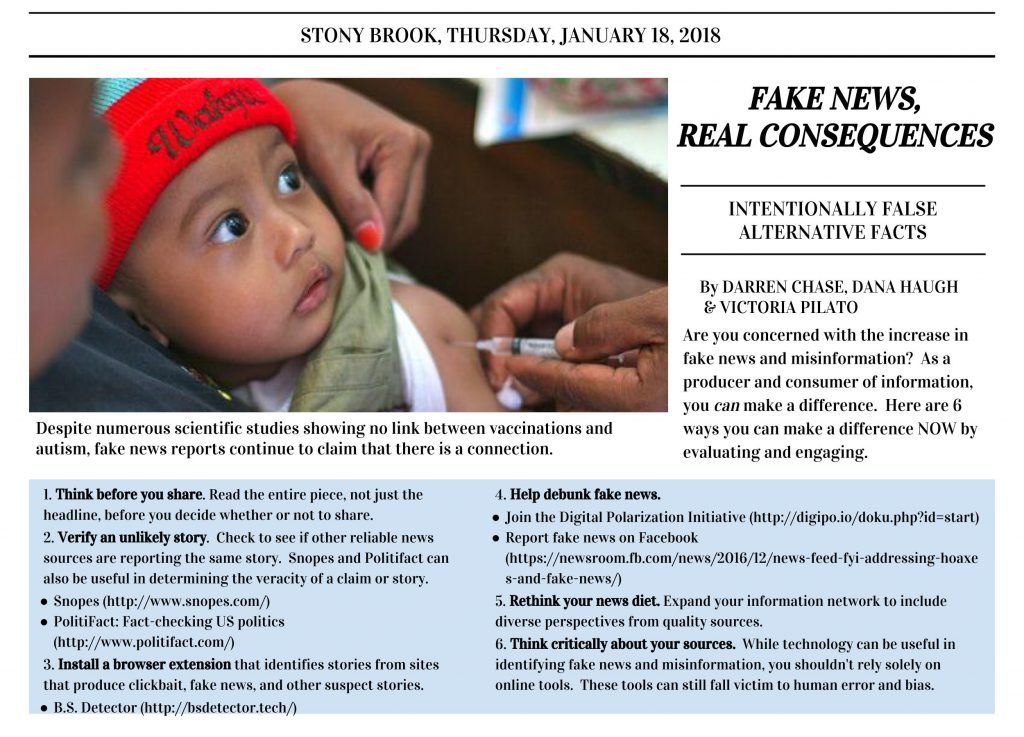Are you concerned with the increase in fake news and misinformation? As a producer and consumer of information, you can make a difference — YOU can counter misinformation and bias. Here are 6 ways you can make a difference NOW by critically evaluating news, becoming an more engaged consumer of information.

Fake News, Real Consequences
1. Think before you share. Read the entire piece, not just the headline, before you decide whether or not to share.
2. Verify an unlikely story. Check to see if other reliable news sources are reporting the same story. Snopes and Politifact can also be useful in determining the veracity of a claim or story.
Snopes (http://www.snopes.com/) PolitiFact: Fact-checking US politics (http://www.politifact.com/)
3. Install a browser extension that identifies stories from sites that produce clickbait, fake news, and other suspect stories. B.S. Detector (http://bsdetector.tech/)
4. Help debunk fake news. Join the Digital Polarization Initiative (http://digipo.io/doku.php?id=start)
Report fake news on Facebook (https://newsroom.fb.com/news/2016/12/news-feed-fyi-addressing-hoaxes-and-fake-news/)
5. Rethink your news diet. Expand your information network to include diverse perspectives from quality sources.
6. Think critically about your sources. While technology can be useful in identifying fake news and misinformation, you shouldn’t rely solely on online tools. These tools can still fall victim to human error and bias.
For more resources and strategies, see the SBU Libraries Fake News guide.
Latest posts by Darren Chase (see all)
- Open Access Symposium 2018 - November 5, 2018
- OASIS, the OER Discovery Service - September 5, 2018
- Open Access Button - May 2, 2018

